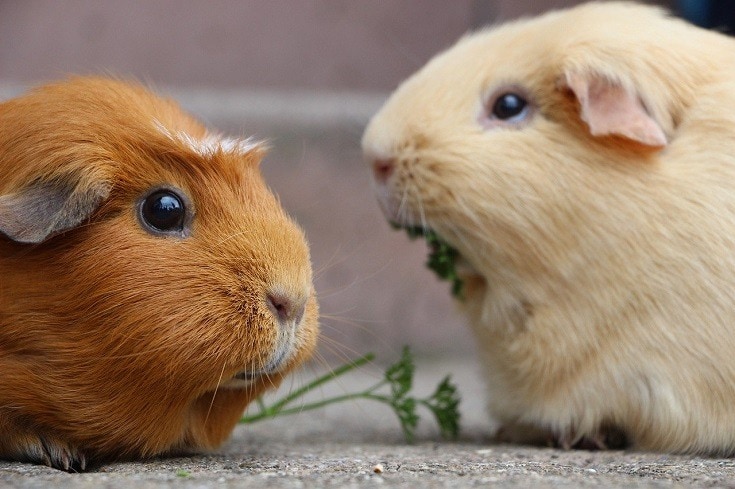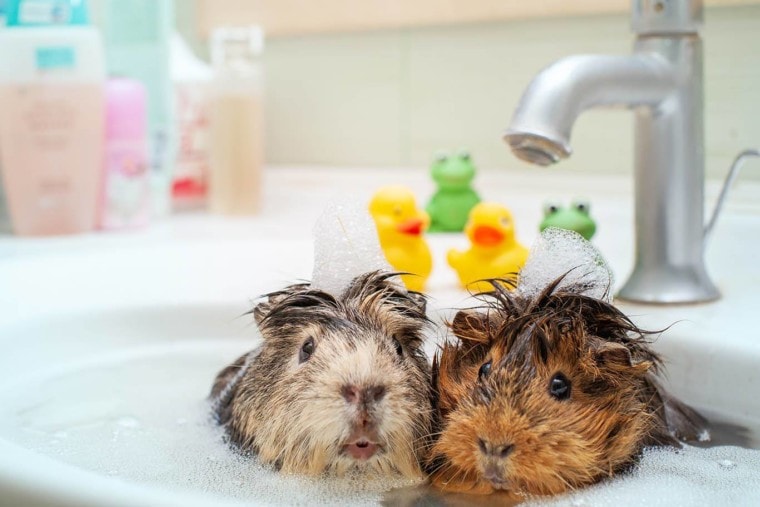
Guinea pigs are great little pets, but sometimes they smell not so great. The good news is that guinea pigs take good care of themselves and do a great job with self-grooming. The bad news is that the cage will need cleaning, and that’s all up to you. Your pet could be sick or eating the wrong kind of food.
Here, we go over the best ways to keep your guinea pig and its environment clean and fresh smelling. These will include how to clean its habitat and the signs that your pet might not be feeling well.
The 8 Ideas & Tips on How to Get Rid of Guinea Pig Smell
1. The Cage
Start With the Bedding
The bedding for guinea pigs should be absorbent, non-toxic, soft on the feet, and dust free, and it should help neutralize odors. The most popular options are fleece liners, paper, cloth, and wood shavings. Each has its pros and cons:
- Paper: It can be absorbent and soft but needs regular changing and might contain dust, and some guinea pigs might eat it. Avoid newspaper if you go with this option, and go with commercial confetti, shavings, or pellets.
- Wood shavings: It is usually cheap and is readily available, but it can hurt your guinea’s feet, is not as absorbent, and can be dusty. It’s best to go with shavings rather than sawdust. The safest options are kiln-dried pine, ash, and aspen. Be sure to only use kiln-dried pine and not regular pine shavings, and avoid straw and cedar.
- Cloth: It can be soft, inexpensive, non-toxic, and dust-free, but it needs frequent washing, can get stinky quickly, and isn’t always effective at wicking away moisture. Cotton is the best option, though, and you can use old bedsheets and towels.
- Fleece liners:This option is soft on the feet, absorbent, eco-friendly, and dust free, and guinea pigs don’t tend to chew on it. But fleece liners are expensive and need frequent washing.
Choosing the right bedding and how often you change it or clean it will dramatically affect how smelly your guinea pig and its cage can be.
The best bedding for guinea pigs overall is fleece liners. The main con is the initial expense, but since they are washable, they end up being much more cost-effective and less smelly than paper and wood shavings.
Remove Your Guinea Pig
Before cleaning the cage, you’ll need to place your guinea pig in a safe location. This can be another cage or another container from which it can’t escape.
You can place food and water in the new location, particularly if you think that the process of cleaning the habitat might take a while.
Clean the Cage Accessories
Take all your guinea pig’s toys, water and food dishes, and any other accessories out of the cage for cleaning. You’ll need to wash everything in hot soapy water, and let them air dry.
Remove the Bedding
This process depends on the kind of bedding in use. In some cases, you might need to scrape all the bedding material out of your piggy’s cage and into the garbage.
Otherwise, you will need to remove the cloth or fleece liner and wash them thoroughly. Follow the manufacturer’s cleaning instructions, but generally speaking, all poop and other debris should be shaken or brushed off the surface. Then, wash it in hot water with an eco-friendly or gentle detergent.
If it’s particularly smelly, you can also add vinegar, baking soda, or bleach to the washing machine. Sometimes, presoaking before putting the liner in the washing machine can help remove the stinkier odors.
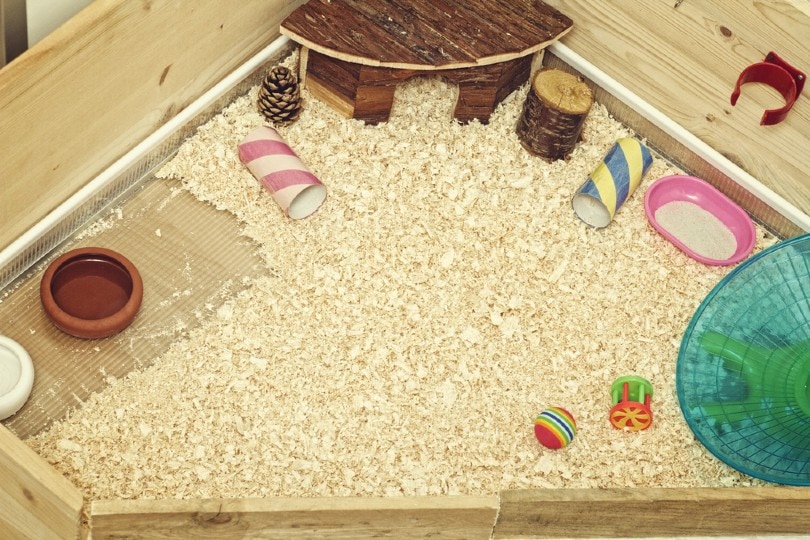
2. Cleaning Guinea Pig Cage Bedding
This part depends on how many guinea pigs you have. If you have more than one, the bedding will need to be replaced more frequently. On average, the bedding should be cleaned or replaced every 2 to 3 days or if you start to smell it. Otherwise, you can simply do some spot cleaning.
Clean the Cage
If the weather is nice and warm enough, you can do this outside; otherwise, use your biggest sink. Use warm soapy water, and scrub the bottom of the cage with a brush.
You should also use a scraper to remove any crusty, hard-to-remove bits. Rinse off the soap, and ensure that the cage is completely dry before placing everything back inside.
Put Everything Back
Before you put anything in the cage, you can sprinkle a little baking soda on the bottom, which can help absorb the stinkier odors. Put everything back in, and put your guinea pig back into its clean cage!
Spot Clean
These steps should be done about once a week, especially if there’s a stinky issue with your piggy’s cage. Spot cleaning should be done every day. Your piggy tends to poop frequently, so you’ll need to stay on top of cleaning this up, as well as any bedding that’s been urinated on and leftover food. Spot cleaning should help reduce bad odors from building up.
- ADVANCED ENZYMATIC CLEANER - Penetrates the most stubborn smells and stains at the deepest molecular...
- FOR ANY MESS, ON ANY SURFACE - This pet odor eliminator cleans your carpets, floors, furniture,...
- FRESH, NATURAL ODOR - Our unique formulation doesn't rely on dangerous or unpleasant chemical...
If you're over your house smelling like you've got a pet, it's time to check out the Hepper Advanced Bio-Enzyme Pet Stain & Odor Eliminator Spray! It removes even the most stubborn smells and stains and comes with a 100% satisfaction guarantee. Click here to find out more about this amazing product.
At Pet Keen, we’ve admired Hepper for many years, and decided to take a controlling ownership interest so that we could benefit from the outstanding products of this cool cat company!
3. Guinea Pig Diet
Sometimes, a guinea pig might not smell that nice because of its diet. Guinea pigs are herbivores, which means they mostly eat plants. Their diet should not only consist of vegetation but also simulate what they would eat in their natural habitats.
Grass and hay are staples for a guinea pig’s diet — at least 80% of the diet should be made up of Timothy hay or other high-quality grasses and hays.
Piggies should also be given pellets to provide them with the necessary vitamins and minerals (including the all-important vitamin C). A small amount of fruit and veggies is also acceptable, although fruit should only be provided once a week.
Foods to avoid:
Some pigs might smell bad because they’ve been eating the wrong things. Speak to your vet if you need more advice on your guinea pig’s diet.
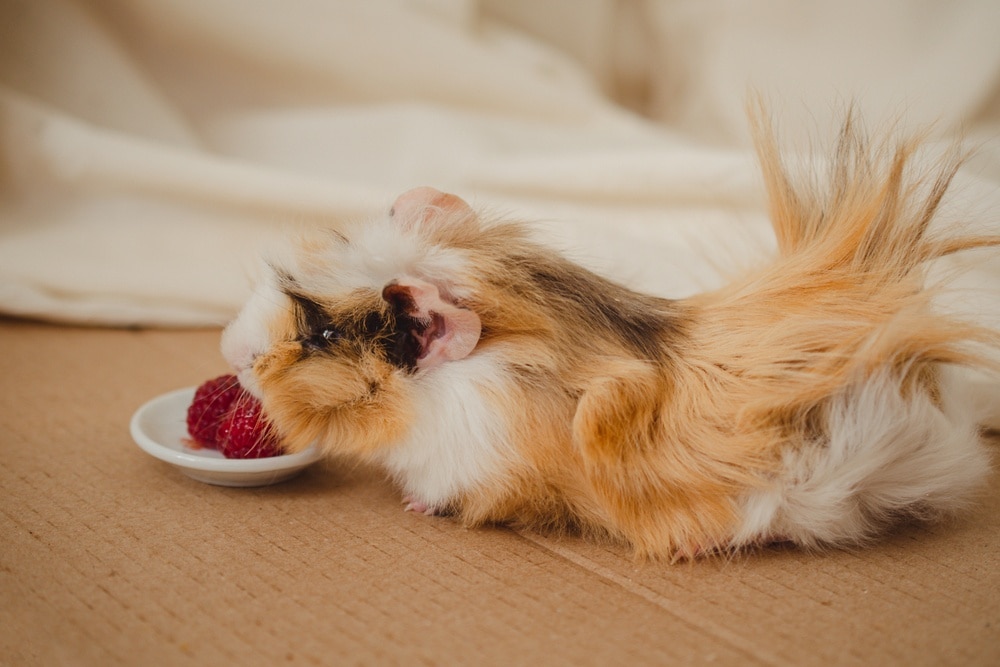
4. Grooming For Guinea Pigs
While guinea pigs do a great job of taking care of their own grooming, there might be times when you’ll need to help, particularly if you have a longhaired piggy. Piggies with excess hair or that are old or sick should be given a hand with their grooming. You can also consider giving your guinea pig a bath if the situation calls for it.
5. Guinea Pig Illness
Sometimes, an ill piggy can stink. Smelly health conditions can include:
If your pig seems to smell worse than usual and has other symptoms, such as a lack of appetite, no interest in anything going on around it, and lethargy, you need to bring it to your vet as soon as possible. When small animals have a health problem, their health can go downhill quite quickly.
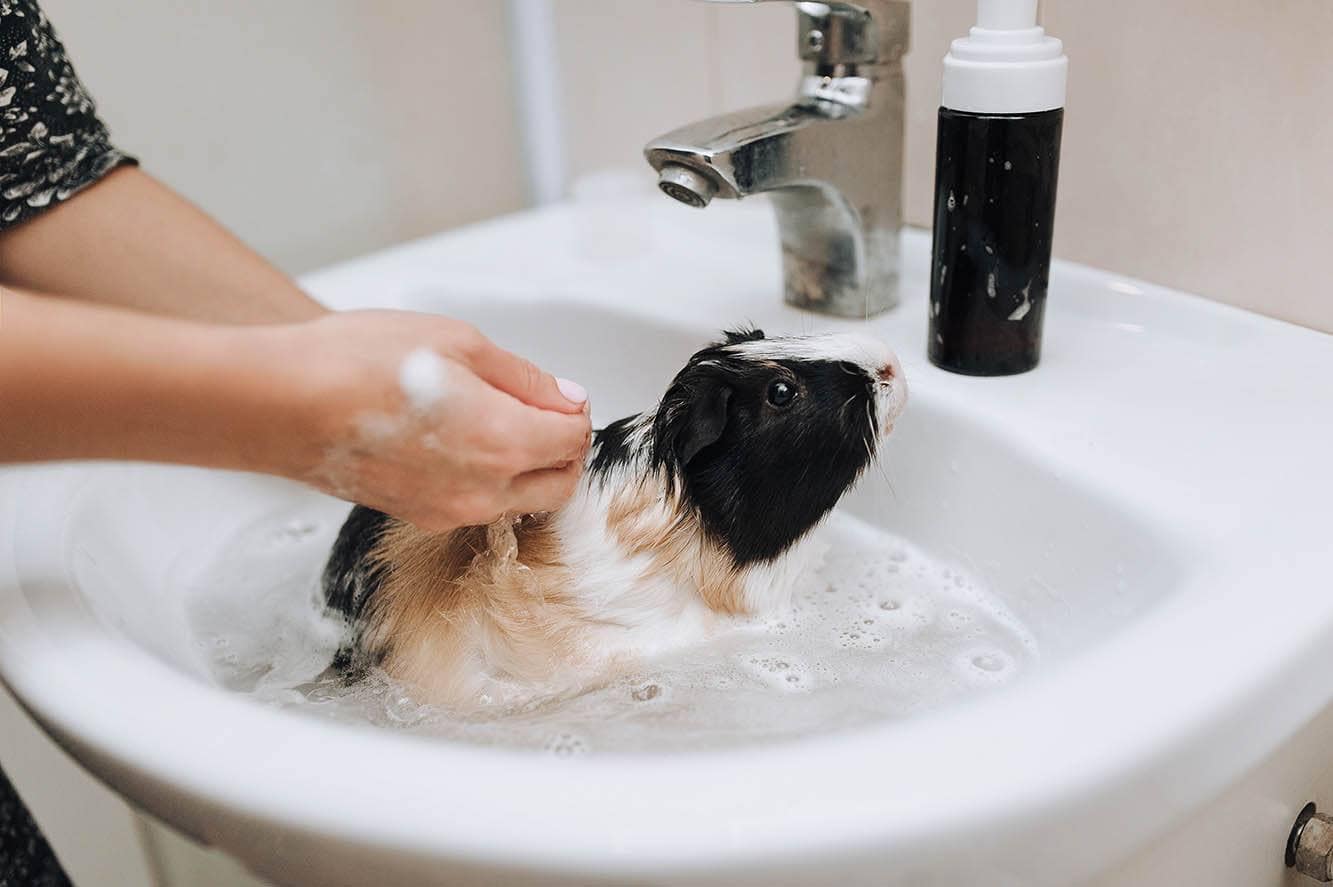
6. Grease Glands
Male guinea pigs can be a little smellier than females because they have active grease glands at the end of their spines. They use the oily substance to scent mark their territory, and if it builds up, it can matt the fur on their behinds. This can be unhygienic and uncomfortable for your piggy! Grooming your pig should also include cleaning its bottom/grease glands.
7. Litter Box
This might surprise you, but you can litter box train your guinea pig. It isn’t guaranteed that your pig will take to it or use it all the time, but it will certainly make cleaning up after your guinea pig much easier if it works.
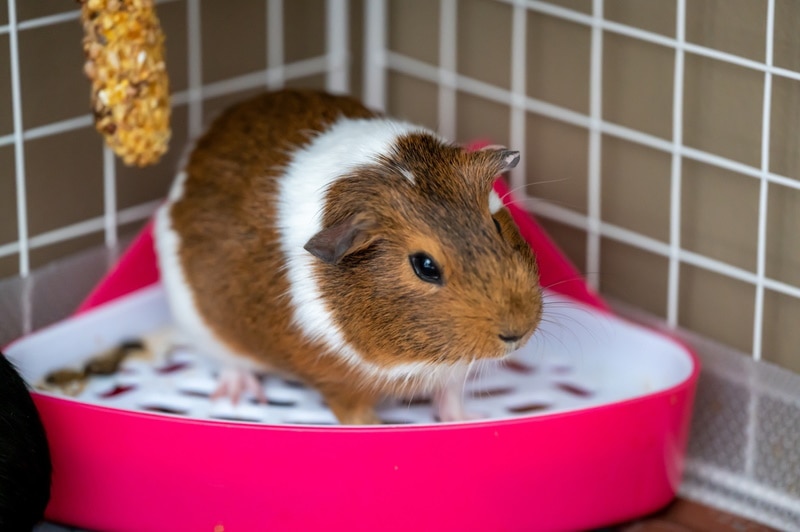
8. Activated Charcoal or Air Purifiers
Consider using an air purifier with activated charcoal in the room itself to help absorb and neutralize the guinea pig odor. This is a band-aid solution because you’ll want to ensure that your pig is in a clean cage and in good health, but it’s a good way to make the room smell a little fresher.
Keep in mind that you should never use any kind of essential oil diffusers, candles, or air fresheners (sprays or plug-ins) in the same room as your pig. The ingredients from these products can cause respiratory problems.
Conclusion
Typically, guinea pigs don’t give off a bad smell. It’s usually a smelly cage that is causing the unpleasant odor. But if your pig is sick or struggling to groom itself, that can definitely lead to a stinky guinea pig.
The most important thing is to figure out where the smell is coming from so you can fix the problem. Whether it’s by cleaning the cage more frequently or visiting the vet, at least you know that you’re taking good care of your pet.
Featured Image Credit: Ase, Shutterstock



